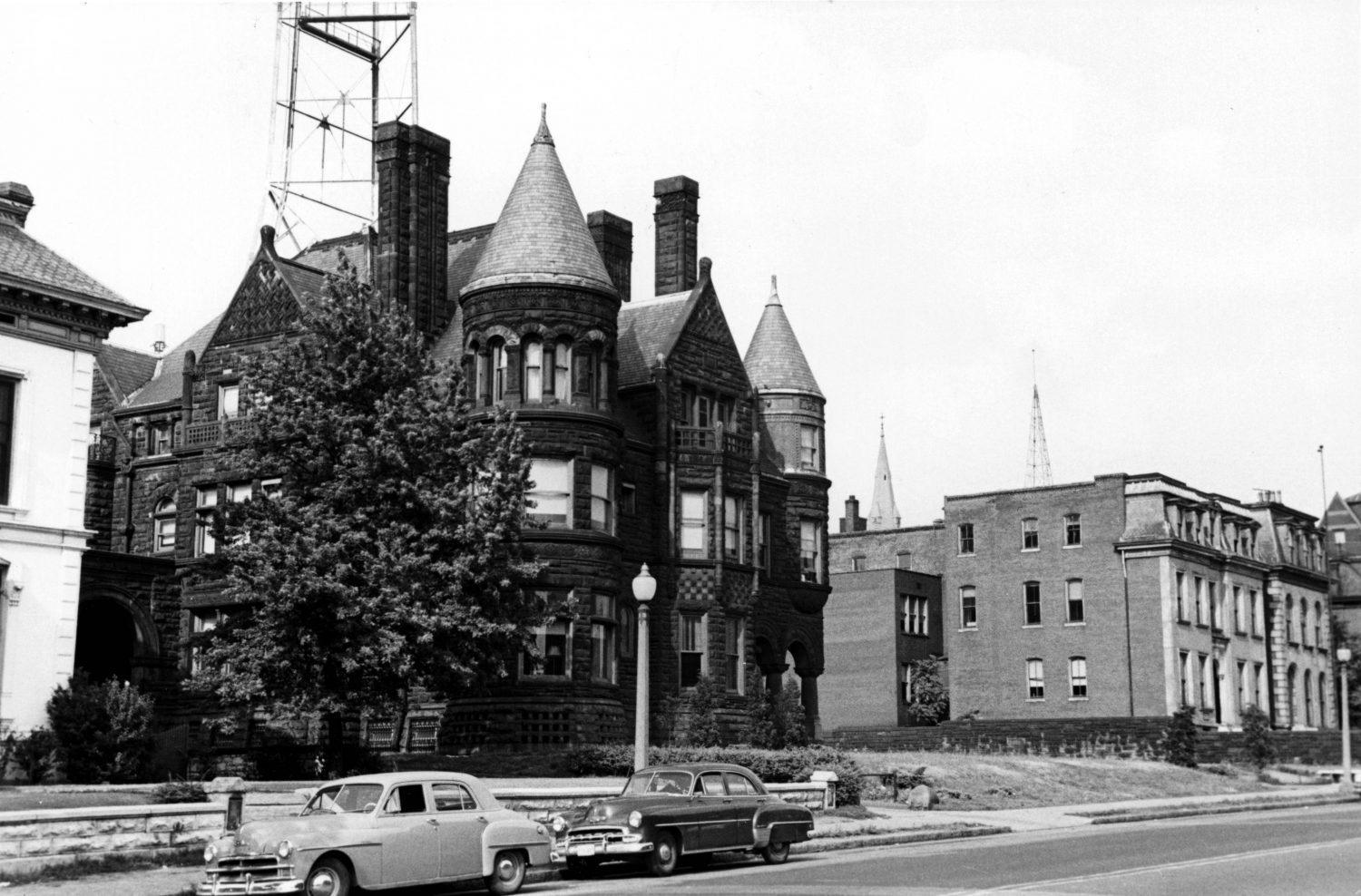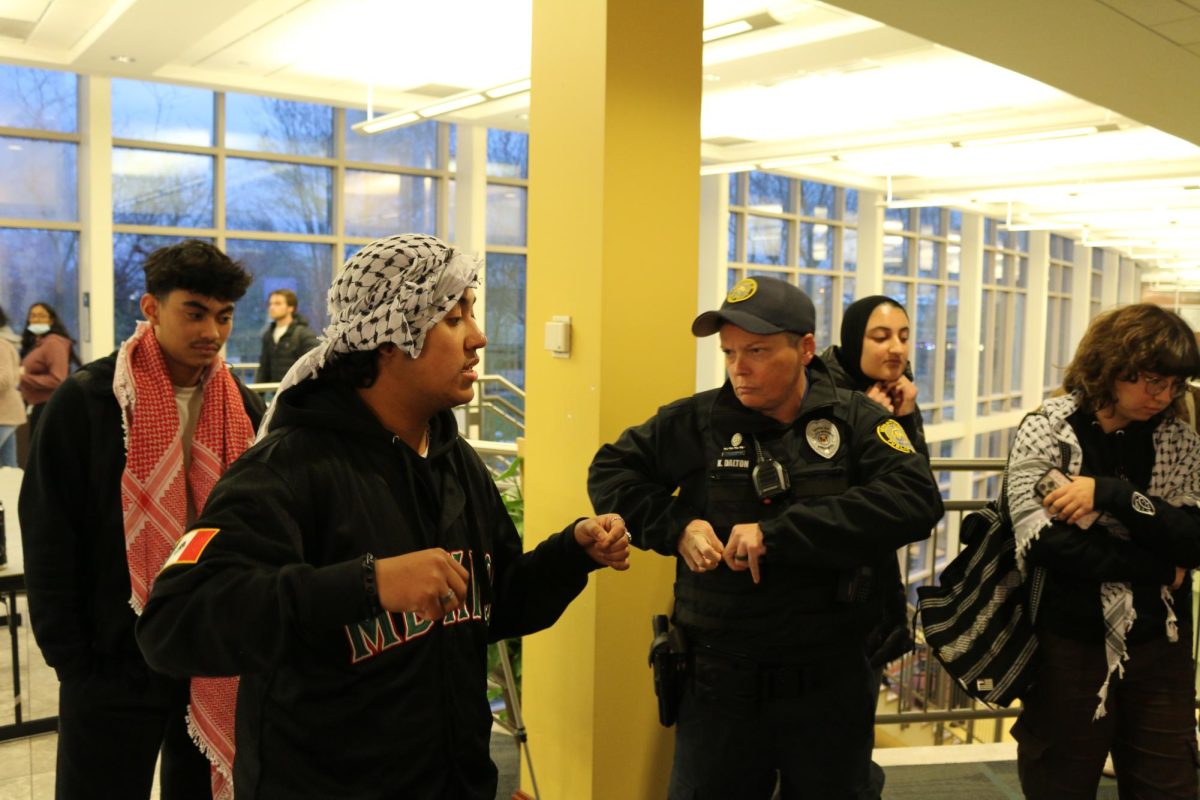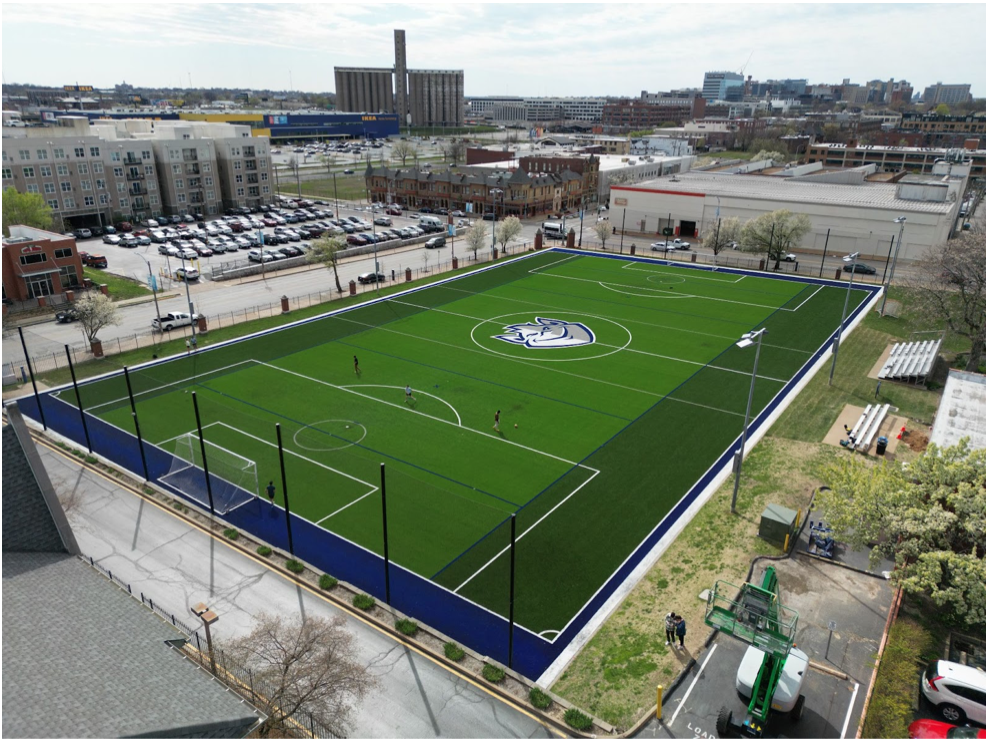The not-so-hidden mansion retains an aura of mystery
Nestled in the heart of SLU’s campus is a dark, sandstone, turreted house built in Richardsonian Romanesque style. The house was never intended to fall into SLU’s hands, though. In his will, Samuel Cupples stipulated that the house couldn’t be sold until eight years after his death and that it could never be used by Saint Louis University because he, allegedly, despised the Jesuits—not because of their beliefs, but because Dubourg Hall ultimately obstructed his view of the city. The site where Cupples’ house was built is the highest point in the city, said Fr. Terrence Dempsey, a professor of Fine & Performing Arts and curator of the MOCRA. Cupples enjoyed a sprawling view of St. Louis before the hall was completed.
“The house remained in the family’s hands until 1919, when it was sold to the American Railroad Telegraphers’ Union. It remained in their hands until 1946, when it was sold to Saint Louis University for $50,000,” states the SLU website dedicated to the house’s namesake.
That number pales in comparison to the original price tag at completion, a steep $500,000, which would be equivalent to over $10 million in today’s standards.
The house served as SLU’s student union building until 1970. Throughout its life, the house has been a site of peace and unrest, revolution and restoration. During the Vietnam War, according to Fr. Dempsey, a peace sign was painted on one of the front columns. When maintenance removed the anti-war marking, they discovered the light sandstone color of the original façade, which has been completely covered by the soot of the city. That is where the inspiration for restoration began. Fr. Dempsey, who was a student at the time, recounts that once the ROTC started to occupy the building during wartime, the house was threatened with fire by anti-war protestors—a fate that became a reality for many other buildings across the country during the unruly time. In 1973, the threat of demolition became all too real. This time, the destruction was backed by the administration due to the building falling into disrepair. The house was scheduled for demolition until Fr. Maurice McNamee argued for the opportunity to restore and preserve the historic house.
“When he wasn’t acting as chair of the [Art History Department], he was over here painting every room and I saw him coming out of the basement where the student union food court was and he had soot going up his nostrils like a coal miner because it was so sooty down there and he was not afraid to work hard. He didn’t say let somebody else do it—he did it,” said Fr. Dempsey on the subject.
McNamee spent a year of his own time restoring the Cupples’ House to its former glory in order to save it from demolition and offer the students at SLU a proper space for activities and art. The house was reopened to the public in 1975 thanks to the Father’s efforts. Fr. McNamee later started the Samuel Cupples House Foundation in order to insure the building’s maintenance and upkeep in the coming years. In 1976, the house was put on the National Register of Historical Places.
Currently, the Samuel Cupples House brochure advertises multiple art collections, including the McNamee Gallery, which exhibits the art created by students and faculty in the food court-turned-exhibition space basement. A collection of SLU’s art predating 1919 can also be found inside the house, hung intermittently in the grand halls and rooms of the home, along with the Eleanor Turshin Glass Collection, which contains colorful glass works in art nouveau style that had been collected by Turshin. The house itself could even be considered a work of art, considering its status as a Richardsonian Romanesque piece, a rare architectural style of revivalist nature that was established by Henry Hobson Richardson and continued by Thomas Annan. It stands as a testament to Victorian values and Gothic character, giving SLU students a unique perspective on the life and times of Cupples’ era. It has 42 rooms and a conservatory that was added in 1904. Due to his strict Methodist beliefs and disapproval of dancing, Cupples didn’t allow the addition of a ballroom contrary to common practices at the time, though it is reported by close family friends that grand parties were held to commemorate New Year’s Eve after his death.
Upon entering the Samuel Cupples House, one is overwhelmed by décor and style that harkens back to the time of Cupples and his family. The historical significance of the house alone solidifies its spot as one of SLU’s hidden gems, and the inside of the house is equally enlightening and educational.






